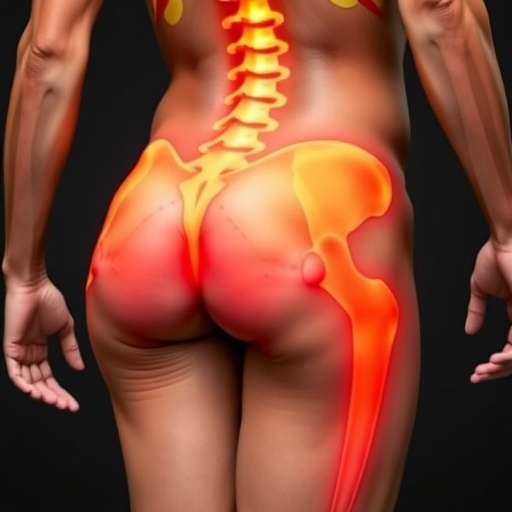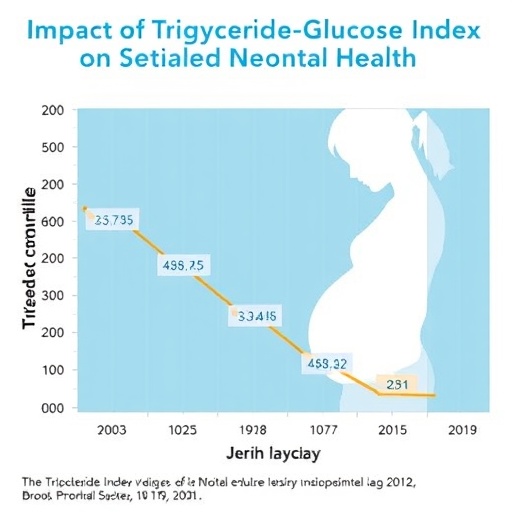In a groundbreaking study published by Chen and Zhang, the complexities of Legg-Calvé-Perthes disease (LCPD) have been dissected to reveal the intricacies of its impact on greater trochanteric overgrowth. This retrospective observational study, drawing from extensive data and patient histories, shines a light on how a relatively common pediatric hip disorder can lead not only to immediate symptoms but also prolonged physical deformities and complications.
Legg-Calvé-Perthes disease is characterized by the avascular necrosis of the femoral head, primarily affecting children between the ages of four and eight. The condition typically manifests as hip pain, limping, and a reduced range of motion. However, its implications can extend far beyond these initial symptoms. The study focuses on the subsequent impact of LCPD on the growth and alignment of the greater trochanter—the bony prominence on the femur that serves as an important site for muscle attachment.
The researchers meticulously analyzed the medical records of children diagnosed with LCPD to identify specific risk factors that could contribute to the likelihood of greater trochanteric overgrowth. The retrospective nature of this study allowed Chen and Zhang to gather a wealth of information over several years, creating a robust dataset that reveals patterns and correlations not previously established in earlier studies.
One of the central findings of the research indicates that the timing of diagnosis plays a crucial role in determining the physical outcomes of children suffering from LCPD. Early intervention, specifically within the first few months following the onset of symptoms, appears to correlate with reduced instances of greater trochanteric overgrowth. This suggests that prompt medical evaluation and treatment could be pivotal in mitigating the long-term effects associated with this condition.
In addition to timing, the study explored other contributing factors, such as age at diagnosis, gender differences, and the severity of the disease during initial presentation. Interestingly, children diagnosed at a younger age exhibited a higher degree of greater trochanteric overgrowth, which poses serious questions regarding the underlying mechanisms of bone growth and development in the context of LCPD. This finding underscores the necessity for tailored treatment strategies that consider the individual characteristics of each patient.
Moreover, the authors examined the implications of treatment methodologies applied to these patients. Various management techniques, including brace therapy and surgical interventions, were assessed for their effectiveness in staving off complications related to overgrowth. The study concluded that while surgical options can provide immediate relief and correction of the hip joint, they do not completely eliminate the risk of greater trochanteric overgrowth later on.
The multifactorial nature of this condition suggests that a one-size-fits-all approach to treatment may not be adequate. Pediatric orthopedic specialists are encouraged to adopt a nuanced perspective, focusing on personalized care that takes into account the findings presented in this study. Long-term monitoring and ongoing assessments of growth patterns could be integral in managing patients with a history of LCPD to preemptively tackle potential deformities.
Among the significant implications of this research is the call for increased awareness and education regarding the outcomes of LCPD. Parents, educators, and healthcare professionals must be apprised of the potential long-lasting effects of this condition beyond the immediate symptoms. Understanding the potential for greater trochanteric overgrowth can empower families to seek timely medical interventions and advocate for necessary treatments.
Chen and Zhang’s findings could also catalyze further research into LCPD, prompting studies that delve deeper into the genetic and environmental factors that predispose certain children to greater complications. Such investigations could not only improve our understanding of LCPD but also contribute to the development of innovative treatment options tailored to minimize the risk of severe outcomes.
In essence, the research conducted by Chen and Zhang emphasizes the need for a paradigm shift in how Legg-Calvé-Perthes disease is perceived and managed. The study brings to the forefront the long-term implications of an initially treatable pediatric ailment, reminding the medical community of their responsibility to ensure comprehensive care that encompasses not only physical rehabilitation but also preventative measures against potential deformities.
In conclusion, the retrospective observational study serves as a stepping stone to a deeper understanding of Legg-Calvé-Perthes disease and its potential complications. By identifying risk factors associated with greater trochanteric overgrowth, Chen and Zhang have provided essential insights that could lead to improved clinical practices and outcomes for affected children. The implications of this research underscore the intersection of timely intervention, personalized treatment, and continuous monitoring in the management of pediatric hip disorders.
As we await further developments in this field, it is clear that this study represents a crucial milestone in addressing the complexities of Legg-Calvé-Perthes disease, encouraging ongoing dialogue among practitioners and researchers alike, to enhance the lives of those impacted by this challenging condition.
Subject of Research: Legg-Calvé-Perthes disease and its impact on greater trochanteric overgrowth.
Article Title: Risk factors associated with greater trochanteric overgrowth secondary to Legg-Calvé-Perthes disease: a retrospective observational study.
Article References: Chen, K., Zhang, T. Risk factors associated with greater trochanteric overgrowth secondary to Legg-Calvé-Perthes disease: a retrospective observational study. BMC Pediatr 25, 758 (2025). https://doi.org/10.1186/s12887-025-06148-9
Image Credits: AI Generated
DOI:
Keywords: Legg-Calvé-Perthes disease, greater trochanteric overgrowth, risk factors, pediatric hip disorders, avascular necrosis, treatment strategies, personalized care.
Tags: avascular necrosis in childrenbony prominence on femurcomplications of hip disordersgreater trochanteric overgrowthhip pain and limpingimpact of LCPD on growthLegg-Calvé-Perthes diseasepediatric hip disorderspediatric orthopedics researchphysical deformities in childrenretrospective observational studyrisk factors for LCPD





